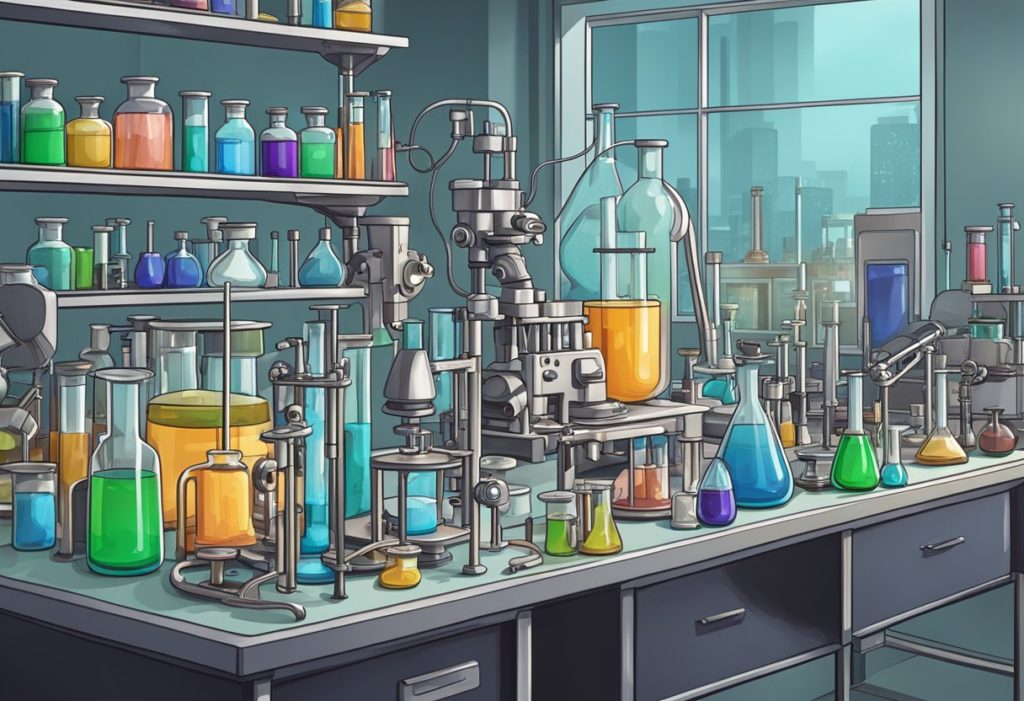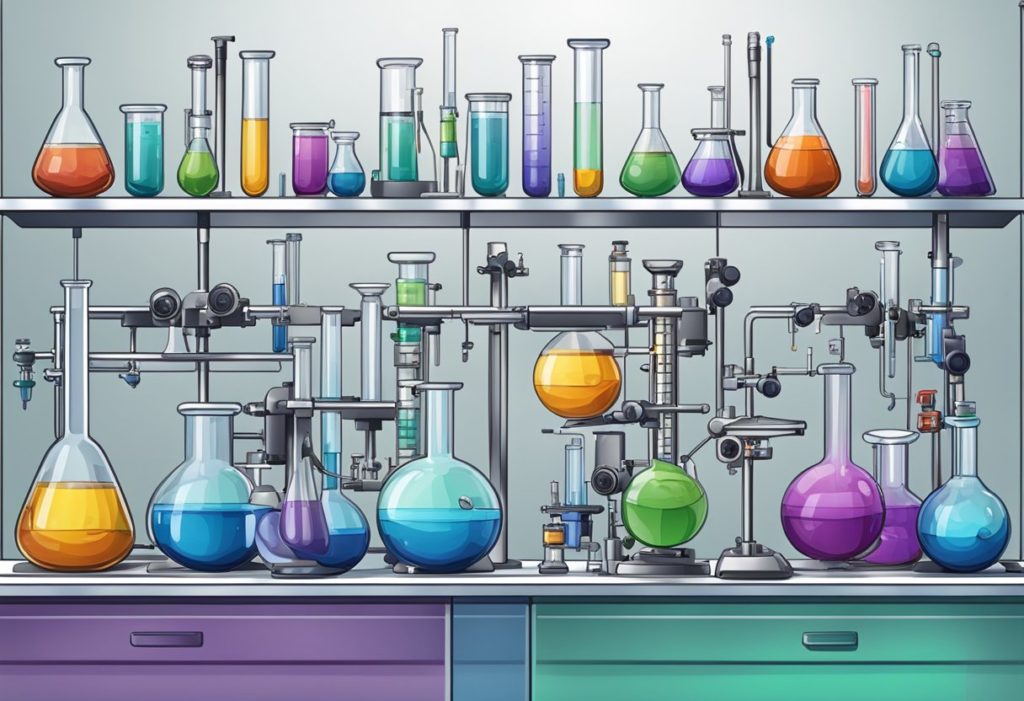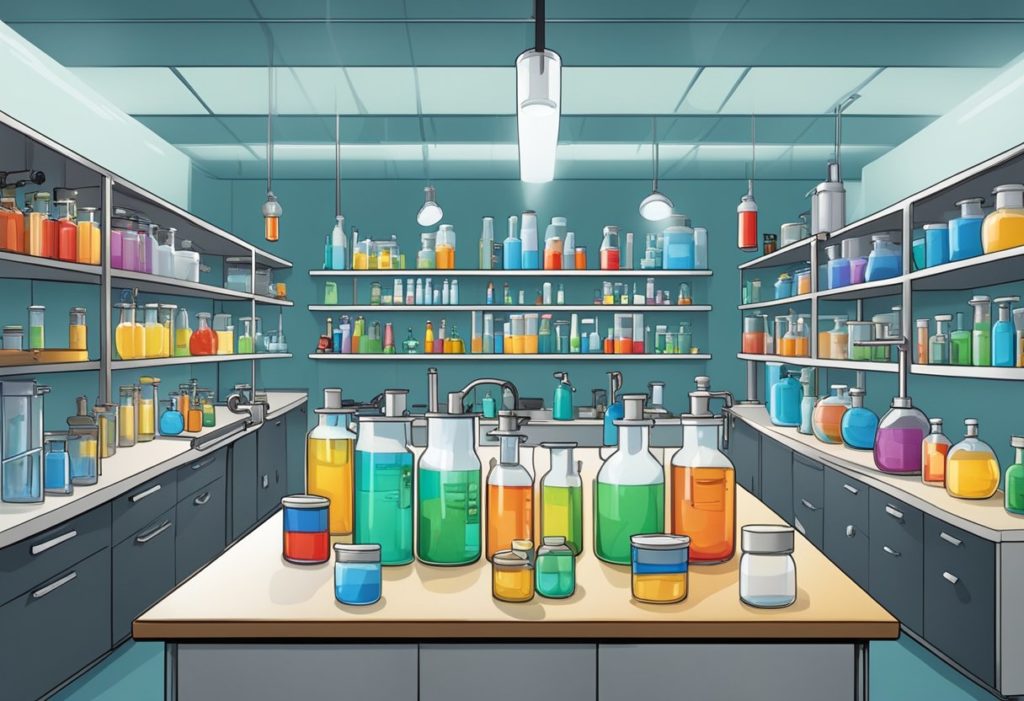In any laboratory, the range of equipment is vast and specialized, depending on the scientific field and the experiments being conducted. You find glassware like beakers and flasks for simple mixing and measuring, while more complex machinery like spectrophotometers and centrifuges analyze samples with precision. Given the variety of scientific disciplines, from biology and chemistry to physics and engineering, the corresponding lab equipment differs to accommodate distinct experimental needs.

High-quality, reliable lab equipment is essential for accurate results. In chemistry labs, you encounter an array of apparatus designed for heating, cooling, distillation, and titration, while biological research relies heavily on microscopes, autoclaves, and incubators. Each piece of equipment, whether for measuring time, temperature, mass, or volume, is integral to scientific inquiry.
Your understanding of laboratory equipment and its applications can enhance your grasp of complex scientific concepts. The equipment serves not only as tools for investigation but also as the backbone of reproducible and valid research across laboratories worldwide. Whether you’re a student, a professional scientist, or simply curious, acknowledging the diversity and roles of lab equipment is a crucial step in appreciating the scientific process.
Types of Lab Equipment

In the diverse world of scientific experimentation, you’ll encounter an array of lab equipment designed for various tasks. Quality and precision form the foundation of these tools, each serving a specific purpose in the laboratory setting.
General Laboratory Apparatus
General laboratory equipment encompasses a range of tools and containers you frequently use. Glassware, essential for containing and mixing chemicals, includes items like beakers, test tubes, flasks, and volumetric flasks. For precise liquid handling, pipettes, graduated cylinders, and burets are at your disposal. To transfer or hold hot glassware safely, tongs and tools such as pipet bulbs become indispensable. Solid materials are often weighed with a balance, and thermometers provide accurate temperature readings.
Heating Devices
When your work involves heating substances, Bunsen burners are a common and reliable heat source. They facilitate processes such as evaporation and sterilization. For more controlled heating, you may use heating mantles or hot plates. Crucibles are small containers that can withstand high temperatures, ideal for melting or calcining samples. Incubators are used for biological experiments where samples require precise temperature conditions over time.
Measuring Instruments
Accurate measurement is critical in your laboratory endeavors. Volumetric flasks enable precise volume measurements, crucial for creating solutions with exact concentrations. Graduated cylinders and burets help in measuring and transferring liquids with accuracy. Spectrophotometers are sophisticated instruments used to measure the intensity of light, and thus, the concentration of a sample. Balances range in precision and are used to weigh solids accurately, which is essential in quantitative analysis.
Specialized Laboratory Equipment

Your work in the lab requires specific tools designed to meet the exact needs of intricate procedures and precise measurement. This section introduces essential items that play a critical role in specialized areas of research and development.
Analytical Instruments
Spectrophotometers are foundational to your analytical tasks, allowing you to quantify the light absorbing properties of molecules. A carefully calibrated spectrophotometer can be pivotal in biochemistry to measure concentrations of DNA or proteins. In your arsenal, you should also include robust pH meters for precise acidity or alkalinity measurements necessary in various analyses.
- Spectrophotometers: Measure absorbance and concentration
- pH meters: Determine the pH level of solutions
Biological and Microbiological Equipment
For your biological studies, an accurate microscope is indispensable to examine microorganisms and cellular structures in detail. Meanwhile, centrifuges support you by separating substances of different densities efficiently. You should also consider incubators which are crucial for culturing and maintaining microbial growth under controlled conditions.
- Microscopes: Examine cell and microorganism structure
- Centrifuges: Separate mixtures by density
- Incubators: Cultivate microorganisms at controlled temperatures
Laboratory Safety and Maintenance

An integral part of working in a laboratory is maintaining a safe environment, which includes using the correct safety equipment and adequate cleaning and sterilization practices to handle materials like rubber stoppers, glassware, and chemicals.
Personal Protective Equipment
Your personal safety should always be a priority in the laboratory. Essential safety equipment includes safety goggles to protect your eyes from chemical splashes, and latex gloves to prevent skin contact with hazardous materials. Replace gloves after handling aggressive chemicals or when they become contaminated. Additionally, ensure that the fit of your protective gear suits you properly to maintain both safety and comfort.
Cleaning and Sterilization
Cleaning and sterilizing your lab equipment are crucial for maintaining a controlled environment and preventing contamination:
- Glassware: Glass items should be cleaned with appropriate detergents, followed by a thorough rinse with distilled water. Sterilization of glassware can be performed using methods such as autoclaving.
- Plastic items: Many plastic products are not autoclavable and may require disinfection with chemical solutions or less harsh sterilizing methods.
- Rubber stoppers: Used to securely seal containers, these must be cleaned using detergents and sterilized through autoclaving or other heat methods if they are heat-resistant.
- Sterilizing: Regular sterilization protocols ensure the elimination of microbial life and should be performed according to the materials’ limitations and degree of exposure to contaminants.
- Safety equipment: Regular inspection and cleaning of safety equipment like goggles and gloves are necessary to ensure their continued functionality and effectiveness.
Use designated waste containers to dispose of contaminated items safely, and always follow your lab’s specific guidelines for the proper handling of materials. Ready to explore further? Contact us today for expert supply assistance tailored to your unique needs!
